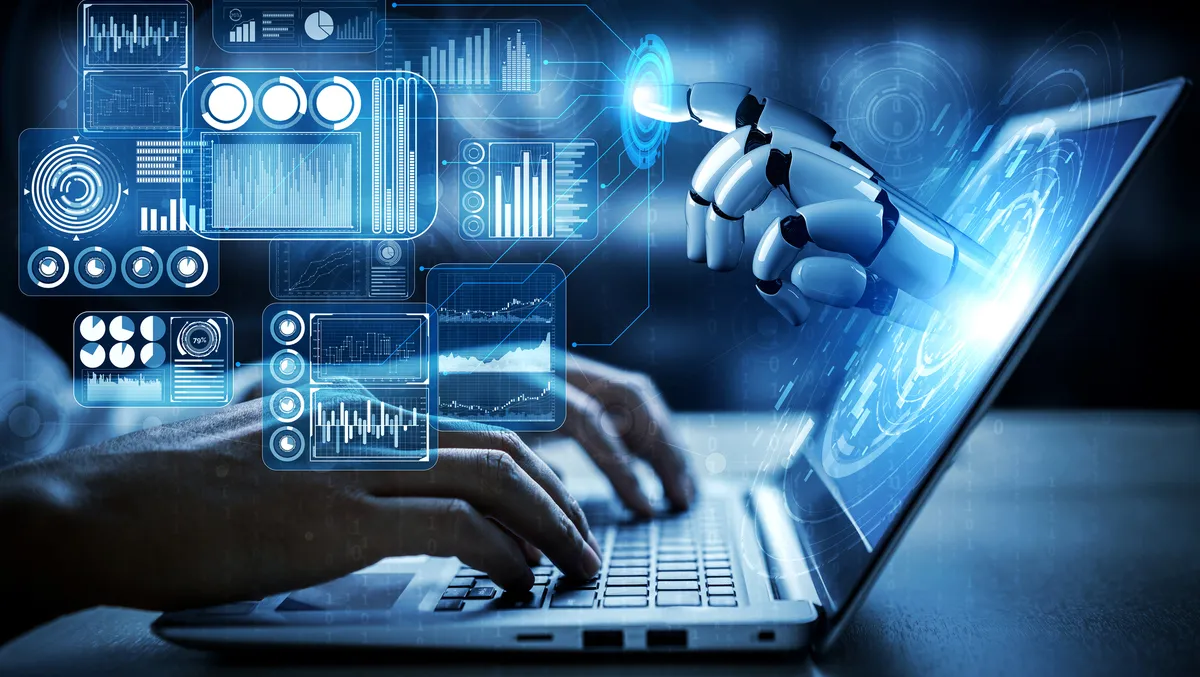On newsfeeds today, we're seeing both concerns and excitement about the capabilities of artificial intelligence (AI). But the biggest controversy around it is whether it can actually learn or if it only does what it is programmed to do. So far, the answer is 'yes and no.'
For those of us made of organic matter and capable of exploring emotions, this impacts what we need to learn. For one, we must gain the ability to work with it daily as end users. And we need people to develop expertise in AI programming.
Some background on artificial intelligence
Research on its capabilities goes as far back as the 1950s. At Dartmouth College in New Hampshire, a plaque reads:
"In this building during the summer of 1956 John McCarthy (Dartmouth College), Marvin L. Minsky (MIT), Nathaniel Rochester (IBM), and Claude Shannon (Bell Laboratories) conducted the Dartmouth Summer Research Project on Artificial Intelligence."
The goal then was to identify if humans can describe and organise aspects of learning so that a machine can be made to simulate it.
Decades later, there needs to be more clarity about what AI is and (by extension) what machine learning is. The confusion is primarily due to work going into them often being done in the background, unnoticeable.
Microsoft defines Artificial Intelligence as the capability of a computer system to mimic human cognitive functions like learning and problem-solving—this capability is created by building a neural network of available data. Through AI, a computer uses mathematics and logic to simulate the reasoning that people employ to learn and make decisions.
The term Machine learning (ML) is not interchangeable with AI but refers to an application of it. ML is the process of feeding data and using mathematical models to help a computer improve how to perform specific tasks without direct instruction. The process enables a computer system to continue learning independently based on experience.
AI as the end-user's new best friend
In 2023, assistant tools like Siri, Alexa and AI features on Canva and workspace apps highlight the power of augmented intelligence. This model shows a human-centred partnership in which people and AI work together.
There is also Generative AI (GAI), a type that can create content like video, audio, images and text. Examples include ChatGPT, Bard, HubSpot's ChatSpot.
For many, AI's assistive role has proved fascinating, supporting location look-ups, document reviews and initial customer services tasks. AI takes away some of the initial grunt work.
But as friends go, the relationship is a two-way street. And humans need to contribute their fair share by focusing on strategy and values. Trustworthy AI Specialist Kristi Boyd notes that end users working with AI should be made aware of their responsibility to provide transparency, expand initial ideas and identify the impact on the individuals, the organisation and the community.
AI powers apps across Microsoft 365 for writing and designing better, visualising maps and charts in Excel, and streamlining inboxes. Staff can learn how AI makes Office apps easier to use, more collaborative, and more secure through end-user applications training. Students also receive guidance on establishing relevant processes and policies within their organisations.
Shaping and guiding the machine
Many have pointed out that some AI and Machine Learning iterations have blind spots and biases -- all true. The evolving field needs specialists who can address these limitations, understand and organise data and build technology solutions around them.
Complicating this is a shortage of AI, ML and other tech skills and the low adoption in the Asia Pacific.
- The Committee for Economic Development report that AI is still in the early phases of implementation in Australia, with only 34 per cent of firms using it.
- The State of Artificial Intelligence in New Zealand Report highlighted a divide in AI maturity. Only 1 in 5 organisations reached AI maturity, and only 7% engaged in core practices supporting widespread AI adoption.
- And while the Philippine Government launched a National AI Roadmap, use of digital technologies in the country is still below potential.
These and the need for human-centred policies around AI make a strong case for inclusivity. Incorporating technology with the wisdom and values of underrepresented groups should be more prominent.
Projects like Australia's joint-managed Kakadu National Park and New Zealand's COVID-19 strategy provide excellent examples. These initiatives give insight into augmented intelligence at play while promoting adoption and making tech skills more accessible for all.
Overcoming barriers to entry in AI and ML
HCLTech Enterprise Technology Office predicts that the democratisation of AI and improved human-robot collaboration will be among the top 10 technology trends for 2023. We agree; equipping people with at least end-user AI skills should start early in schools and workplaces.
Beginning a career as a specialist requires a basic knowledge of code writing and an agile mindset. Getting the basics of AI and ML down takes six months of understanding the concepts, the impact and use cases while working on simple projects.
And while SEMRush reported that 93% of automation technologists do not feel sufficiently prepared for its fast-paced nature, continuous practice and connecting with communities for idea and research sharing ensures that the field, the machines and the people can cope and improve.


